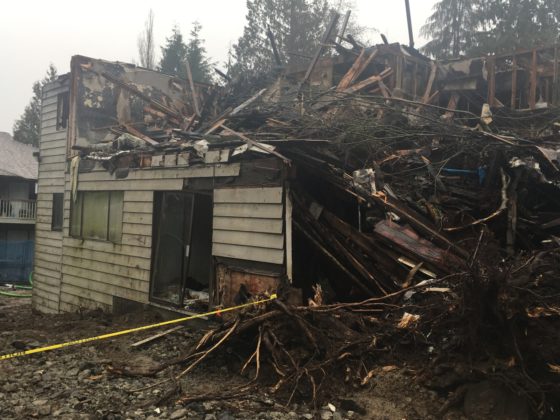It can take months for restoration workers to clean a fire-damaged structure. They face a range of hazards, such as exposure to hazardous materials.

Photo credit: On Side Restoration/Justin McConville
Justin McConville, laboratory manager and hazmat department supervisor at On Side Restoration, has seen hundreds of fire-damaged buildings during his career in the restoration industry.
He tells me that, depending on the level of damage, workers can be in the building for a long period of time, potentially being exposed to a lot of soot and fire-damaged materials if they’re not properly protected.
“As restoration workers, we have to be so careful how we deal with this stuff,” he says. “It’s much like asbestos. You may not notice the effects right away but it can affect you many years down the road. You have to really protect yourself now to set yourself up for the future.”
Restoration workers use personal protective equipment (PPE) such as respirators and protective clothing to guard against these hazards. Proper hygiene is also crucial.
“This includes washing your hands, and not tracking the stuff into your vehicle and home with you,” says Justin.
Workers must decontaminate or dispose of PPE after contact with hazardous material. (See step-by-step instructions in a WorkSafeBC video I talk about in my post Donning and Doffing PPE in the Restoration Industry.)
Is it safe to enter the building?
But let’s back up a bit. Before restoration workers can even start work, they need to be sure it’s safe to enter the structure.
“It’s really important to have the qualified people involved from the start to make sure it’s safe for everyone,” says Justin. “The roof could be burnt off, or the floor could be compromised from underneath.”
No one can enter a building without proper clearance from the fire department and a structural engineer. Once clearance is received, a qualified person completes a Site Safety Assessment (SSA) and a hazardous materials survey to identify hazards requiring elimination or control. When it’s safe for work to being, workers look for photos, identification, medications, and other important items. Depending on the extent of the fire, they may be able to clean, salvage, and restore certain contents.
Says Justin: “Once we know the hazards, we have to start processing contents and removing damaged materials — basically tearing the house partially down and strategically rebuilding it.”
See the WorkSafeBC bulletin Ensuring restoration worker safety after a structural fire for an overview of the hazards and risks of restoration work, as well as an outline of safe work practices.
Many thanks to Justin for telling me about his work.


